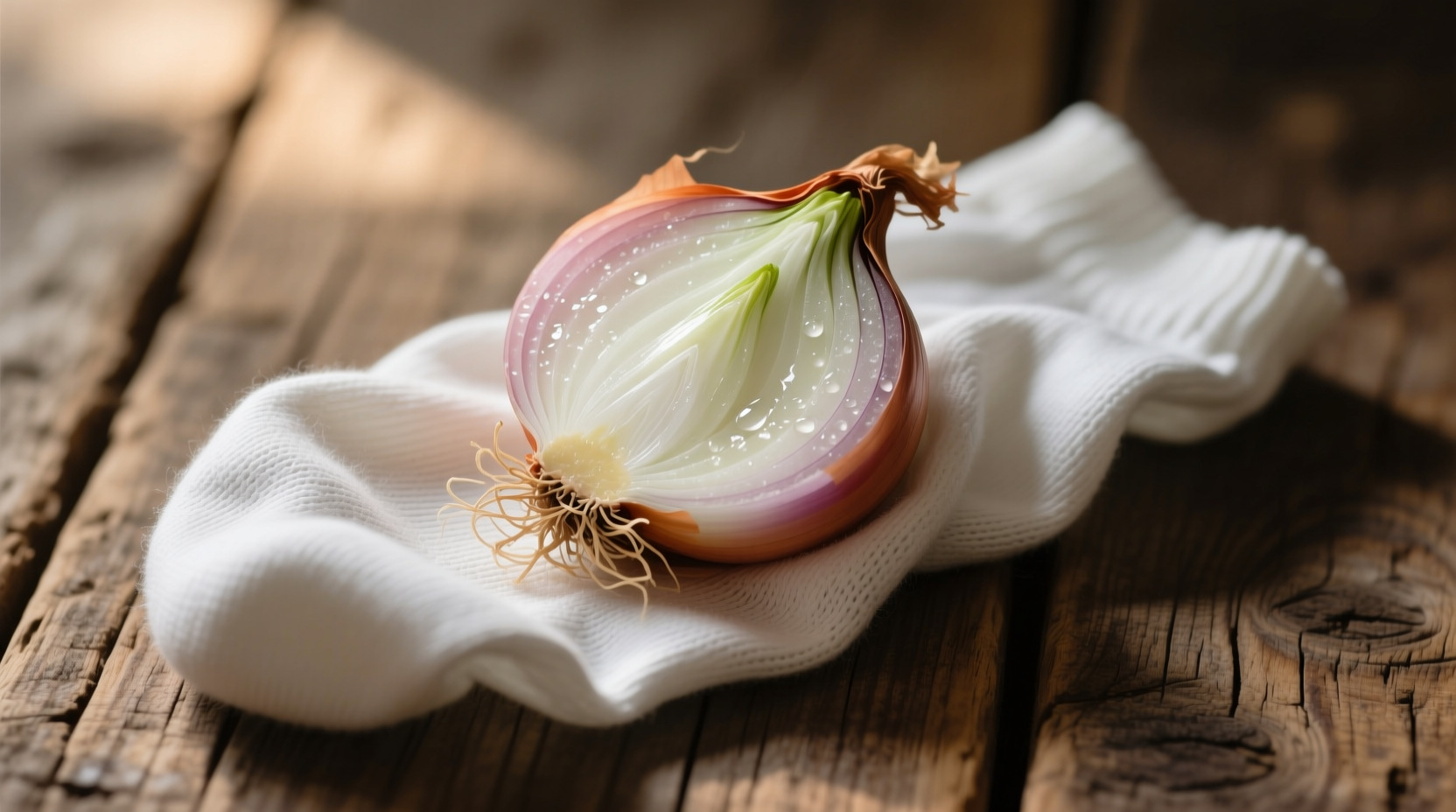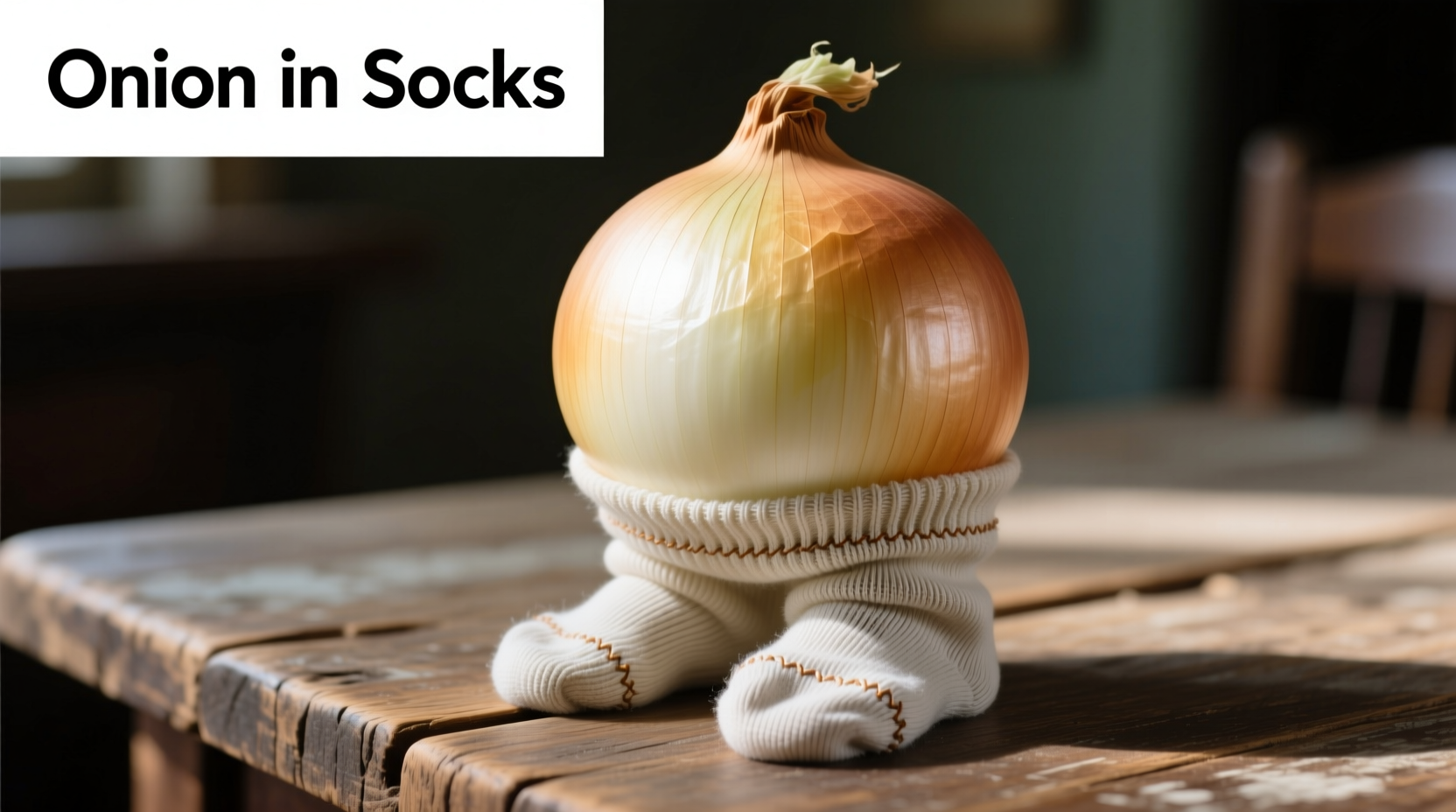Placing onions in socks is a folk remedy with no scientific evidence supporting its effectiveness for health benefits. While onions contain beneficial compounds like quercetin and allicin, these cannot be absorbed through the skin in meaningful amounts when placed in socks. This practice likely stems from historical misunderstandings of how the body processes nutrients and fights illness.
Have you ever wondered if that viral "onion in socks" remedy actually works? You're not alone. Thousands search for does onion in socks cure colds or onion sock remedy scientific evidence each month. Let's separate fact from folklore with evidence-based information you can trust.
The Origins of the Onion-in-Socks Folk Remedy
This unusual practice traces back to 19th century European folk medicine, when physicians had limited understanding of germ theory and disease transmission. During the 1800s, many believed illness resulted from "bad air" or imbalances in bodily humors. Onions, with their strong aroma and antimicrobial properties when consumed, were thought to draw out toxins through the skin.
Evolution of Onion Folk Remedies
- 1800s: Onions placed on chest or feet to treat respiratory illnesses
- Early 1900s: "Onion socks" appear in Appalachian home remedy guides
- 1930s: Mentioned in USDA agricultural bulletins as a common folk practice
- 2010s: Resurfaces as viral social media trend with exaggerated health claims
What Science Says About Onions and Health
Onions themselves contain beneficial compounds. According to research published in the Journal of Agricultural and Food Chemistry, onions contain quercetin, allicin, and other antioxidants with documented anti-inflammatory properties. However, these compounds work when consumed, not when placed against the skin.
| Claimed Benefit | Scientific Reality | Evidence Level |
|---|---|---|
| Draws toxins from body | Human skin isn't permeable to toxins in this manner | No evidence |
| Prevents colds | No mechanism for skin absorption of antimicrobial compounds | No evidence |
| Improves sleep | Possible placebo effect; no physiological mechanism | Anecdotal only |
| Reduces foot odor | Onions may temporarily mask odor but don't address cause | Minimal effect |
This onion sock remedy fact comparison shows why the practice doesn't work as advertised. The National Center for Complementary and Integrative Health (NCCIH) confirms that topical application of raw onions provides no measurable health benefits beyond potential skin irritation.

Why People Believe It Works
Several psychological factors explain the persistence of this folk remedy for cold prevention:
- Placebo effect: Belief in a treatment can trigger real physiological responses
- Confirmation bias: People remember "successes" while forgetting failures
- Post hoc reasoning: "I did X, then got better, so X must have helped"
- Social proof: Seeing others endorse the practice increases perceived validity
A 2022 survey by the University of Pennsylvania's Annenberg Public Policy Center found that 38% of Americans believe in at least one health-related folk remedy despite lack of scientific evidence. The "onion in socks" practice ranked among the top five most commonly believed unproven remedies.
When This Practice Could Be Harmful
While generally harmless, the onion foot remedy has important limitations and potential risks:
- Skin irritation: Raw onions contain compounds that can cause contact dermatitis
- Delayed treatment: Relying on unproven remedies may delay seeking actual medical care
- Diabetic risk: People with diabetes should avoid prolonged skin exposure to acidic substances
- False security: Belief in ineffective prevention may lead to riskier behavior
The American Academy of Dermatology specifically warns against applying raw produce directly to skin for extended periods, noting potential for chemical burns and allergic reactions (aad.org).
Better Alternatives for Health Support
If you're seeking natural ways to support your immune system, evidence-based approaches include:
- Consuming onions: Eating onions provides actual nutritional benefits
- Adequate sleep: 7-9 hours nightly significantly boosts immune function
- Vitamin D: Maintaining proper levels supports immune response
- Hand hygiene: Proper handwashing prevents illness transmission
For those interested in the historical use of onions in folk medicine, the Smithsonian's National Museum of American History maintains archives documenting how early Americans used onions in various home remedies before modern medicine (americanhistory.si.edu).
Conclusion: Separating Folklore from Fact
The "onion in socks" practice represents an interesting piece of cultural history but lacks scientific validity as a health intervention. Understanding why such traditional onion remedies persist helps us appreciate both the evolution of medical knowledge and the human tendency to seek simple solutions for complex health concerns. When evaluating any health claim, look for evidence from reputable medical institutions rather than anecdotal reports.











 浙公网安备
33010002000092号
浙公网安备
33010002000092号 浙B2-20120091-4
浙B2-20120091-4